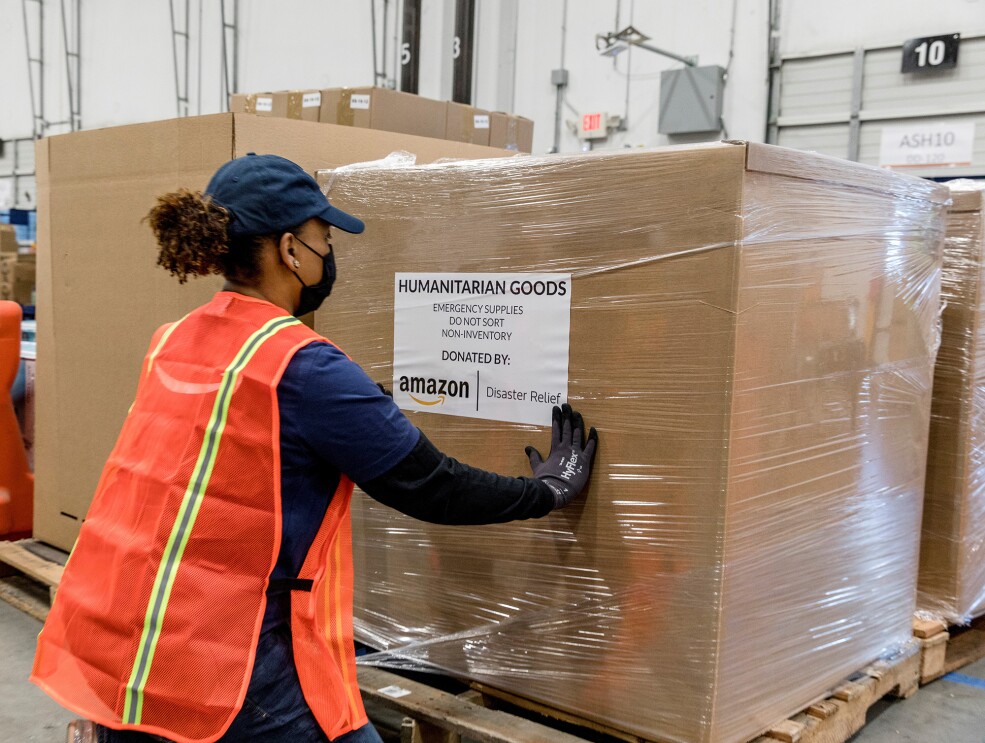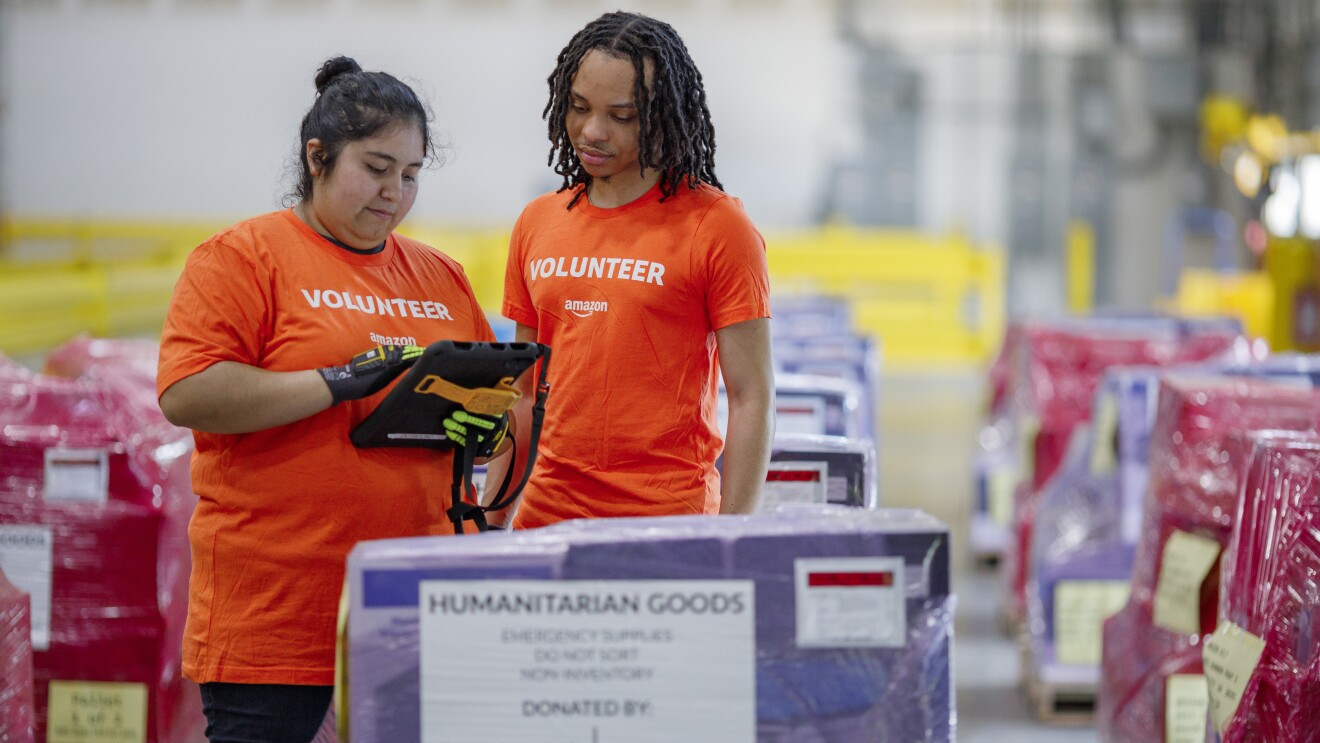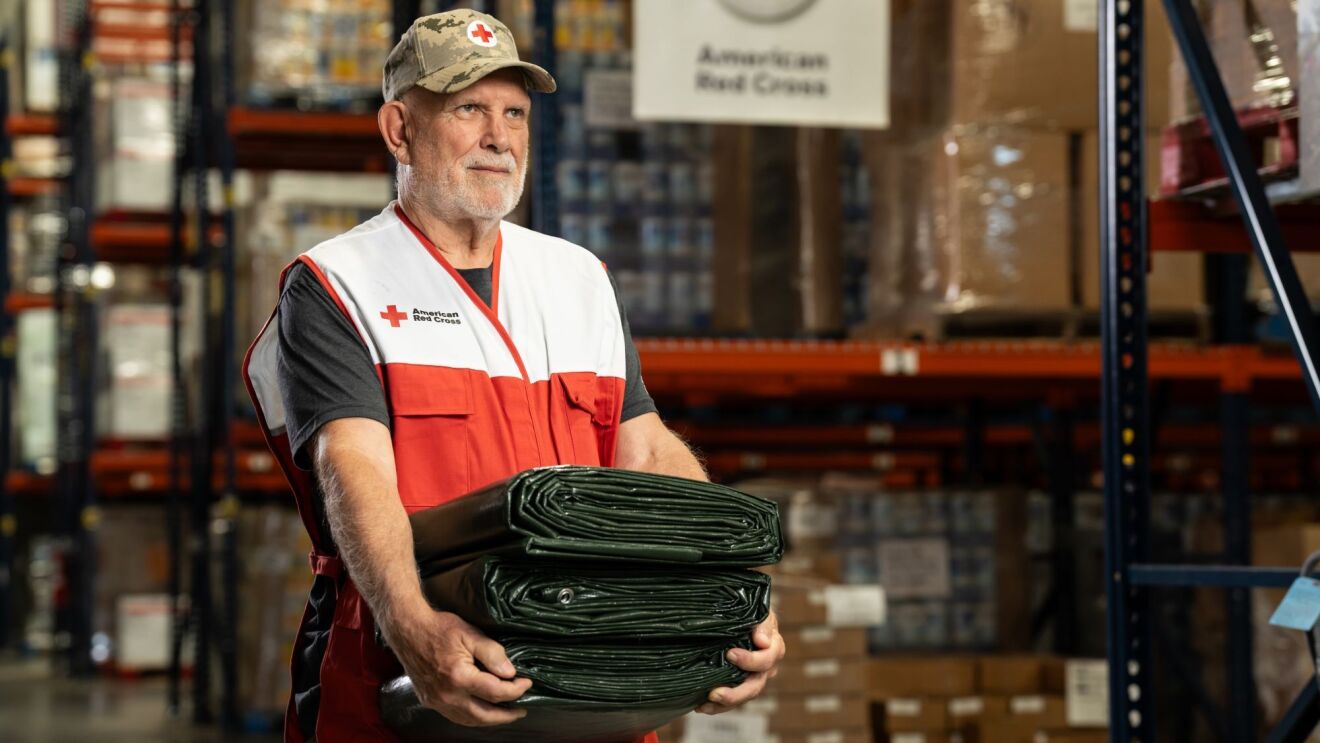We are doubling the size of Amazon’s Global Disaster Relief hub in Atlanta to help communities affected by natural disasters. That includes donating 1 million critical relief supplies, increasing logistics support, and doubling storage space in the hub, which can quickly distribute disaster relief kits to communities both in and outside the U.S. when a catastrophe strikes.
The hub will pre-position 1 million emergency relief items—more than double compared to last year—that include shelter materials, hygiene supplies, medical equipment, cleanup and repair materials, and toys and household items for children. Amazon is now ready to activate the hub for a wider range of disaster events, including hurricanes, tornadoes, wildfires, earthquakes, and humanitarian crises.
The hub will expand to 20,000 cubic feet of fulfillment center space and support more than 10 relief organizations. Partners include Save the Children, the American Red Cross, the International Federation of Red Cross and Red Crescent Societies, International Medical Corps, World Central Kitchen, SBP USA, MedShare, All Hands and Hearts, and others.
“Over the past year, the Amazon disaster relief hub has allowed us to deliver aid to communities impacted by disasters faster than ever before,” said Abe Diaz, Amazon’s disaster relief lead. “We’ve utilized Amazon’s expertise in global logistics and delivery to provide help to those in need—quickly.”
“Through our disaster relief hub in Atlanta and our humanitarian sites in Slovakia and Poland—which we built in just 10 days after the war in Ukraine started—we’ve helped our partners get critical relief items into the hands of the communities that need them the most,” he said. “Hurricane season is now officially underway, and we are ready to continue our work with dozens of community partners to support people facing crises or seeking refuge.”
01 / 03
The 2022 hurricane season, which started June 1, is forecast to see between 14 and 21 named storms, with six to 10 of those storms expected to reach hurricane strength, according to the National Oceanic and Atmospheric Administration (NOAA). The location of the disaster relief hub in Atlanta allows Amazon to quickly respond to hurricanes and other natural disasters in the southeastern U.S., along the Gulf Coast, and in the Caribbean, including Puerto Rico.
We analyzed Amazon data across four years of disaster support and designed a pre-positioning strategy for the most common relief supplies needed by our humanitarian aid partners. The work helps ensure that the most in-demand items are as close as possible to where they will be needed.
During a natural disaster, critical relief items are rapidly delivered, and we then work with community partners to identify other supplies from our vast selection of products to fill additional needs on the ground. Amazon employee volunteers also support humanitarian efforts by preparing disaster relief kits, which Amazon donates and distributes when a disaster strikes. The kits include commonly requested items during disasters, ranging from first aid products to towels and hygiene items.
“In times of emergency and crisis, strong partnerships make a world of difference for kids and families who are most affected. Save the Children is proud and grateful to work with Amazon and its Disaster Relief Hub to ensure kids and their families can quickly get essential child-focused supplies that will aid in their recovery,” said David Niersbach, head of U.S. humanitarian and emergency response for Save the Children.
“Marty and I have been alongside first responders and emergency management personnel when disasters hit the Peach State, so we know firsthand how critical it is for resources to be made available quickly and efficiently,” said Georgia Governor Brian P. Kemp. “We’re proud that Amazon is continuing to build out their humanitarian aid network from right here in Georgia. The Global Disaster Relief hub will continue to have a positive impact, and we’re grateful for this good corporate citizenship in times of great need.”
Since 2017, our disaster relief efforts have provided over 18.3 million items in response to 82 natural disasters and humanitarian aid crises around the world. Those efforts utilize Amazon's vast operational excellence, innovative technologies, and global logistics network to provide fast and effective support to relief teams worldwide responding to large-scale natural disasters.
We have filled cargo jets and shipped truckloads of Amazon-donated items for communities ravaged by hurricanes. We also have sent solar-powered lights to people living without power after tsunamis, enabled customers to easily donate products and cash to such relief efforts on Amazon.com, and helped both governments and nonprofits expedite response efforts at scale through Amazon Web Services cloud services.
Trending news and stories












